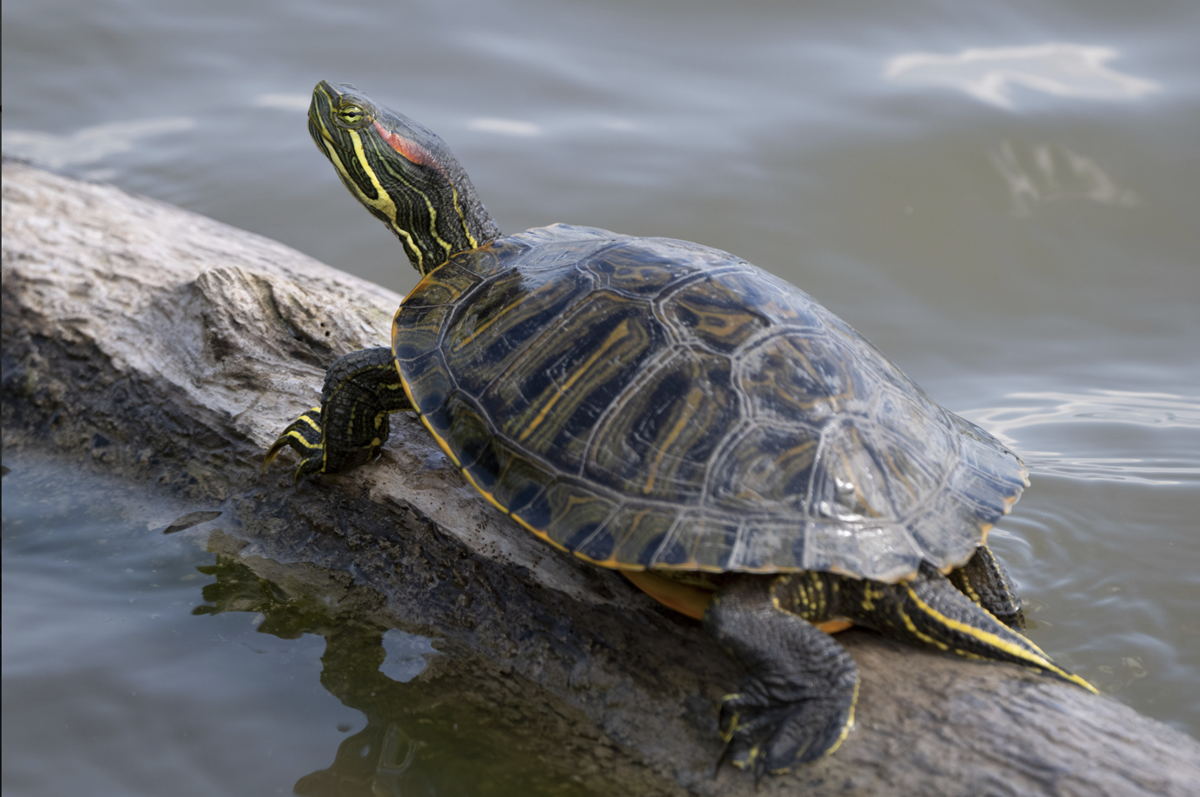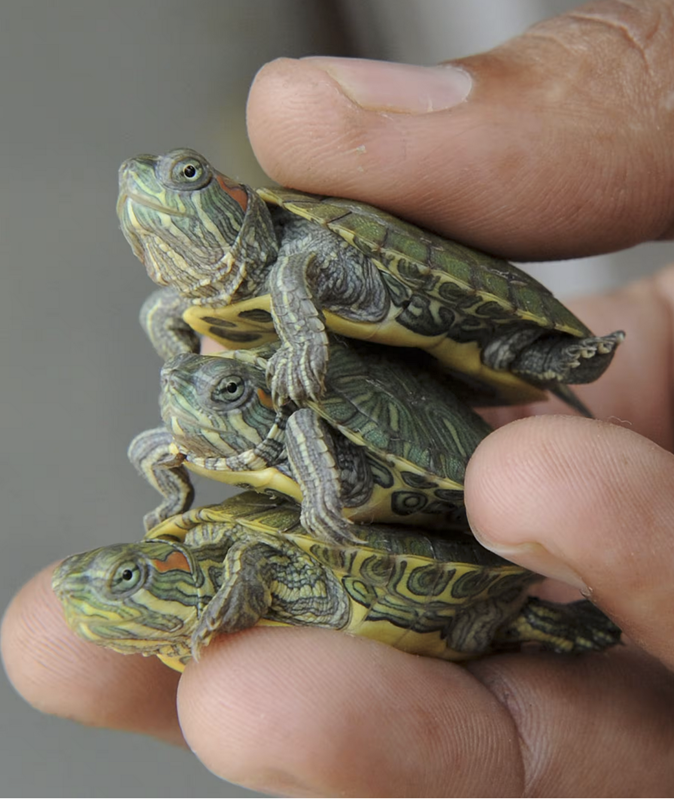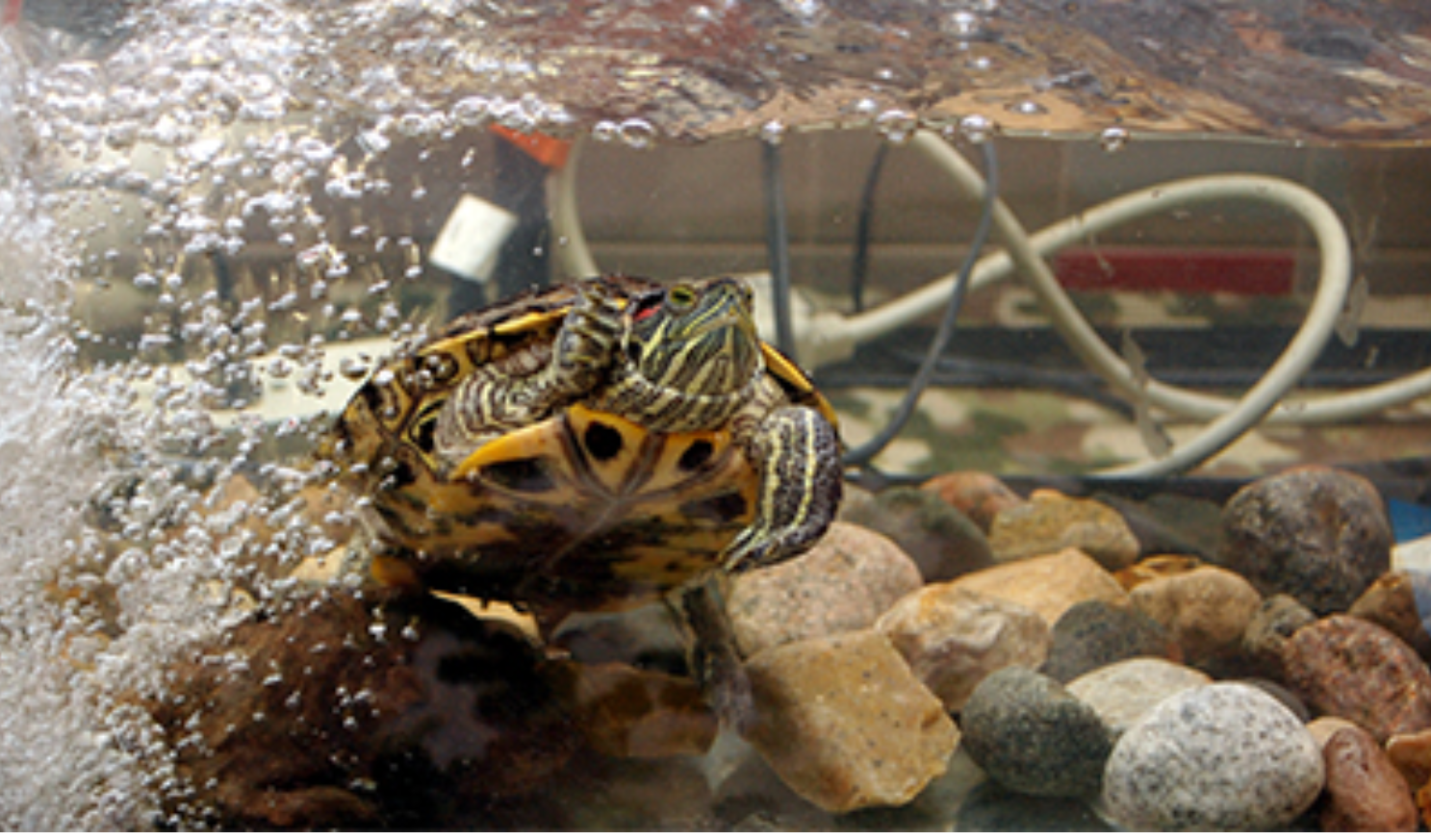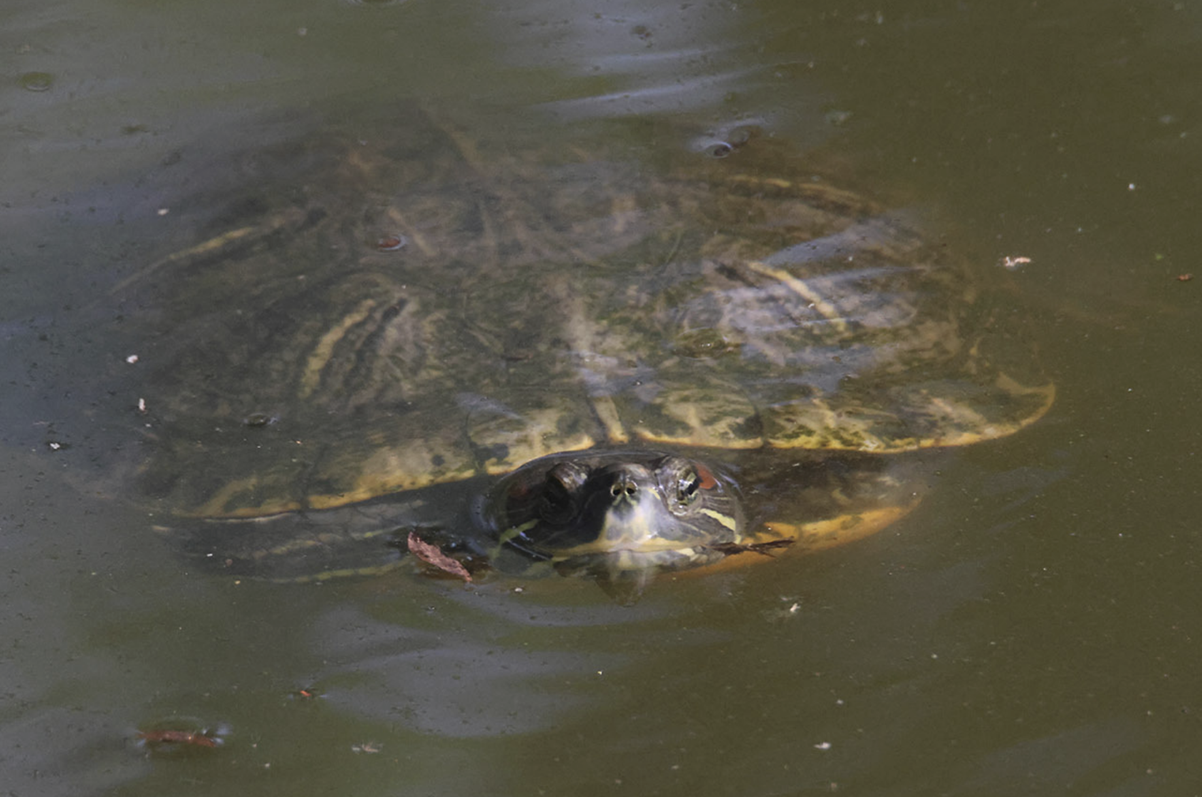
Photo by ©malo_maxima, iNaturalist



Photo by ©malo_maxima, iNaturalist
Wait, red-eared sliders (Trachemys scripta elegans) are invasive? Aren’t they native to Illinois? The answer to both questions is yes. Some might call the red-eared slider the “house sparrow of the reptile world”—both are prolific breeders, habitat generalists and readily out-compete other native turtle species.

Small and inexpensive, red-eared slider hatchlings were sold in large numbers in five-and-dime and pet stores during the 1950-1970s. In the 1970s in the U.S., as a reaction to baby turtles spreading salmonella to children, the sale of red eared sliders under 4 inches in length was banned, but not the sale of those over 4 inches. A hardy species, and easy for turtle farms to raise, today, they are the most abundant and popular pet turtle sold globally.
Most of these impulse-buy pet owners didn’t know much about how to properly care for an aquatic turtle. As the turtles (and the smell in the aquariums) grew, many of these turtles were illegally released.
Most pet owners also didn’t know that when properly cared for, these turtles can live to 30 years—way past the time Jr. has gone off to college without their turtle. Many of these adult red-eared sliders also found themselves abandoned outdoors.

These scenarios played out over and over and led to established populations of red-eared sliders in many parts of the world where they do not belong. They readily out-compete native turtles, making them one of the world’s most invasive species.
Red-eared sliders are native to Illinois, but their ability to survive in low quality habitat coupled with their high reproductive capacity make them invasive species here as well. A quick glance at a distribution map shows that they can be found in all 102 counties. While the Field Guide to Amphibians and Reptiles of Illinois documents that this aquatic turtle prefers quiet water with a muddy bottom and plenty of vegetation, as a generalist species, they are known to survive in much less ideal locations such as in sewage water or wet roadsides.

Their mating season lasts from March to June, and the female digs her nest on land between mid-May and early July. Depending on her age and size, she’ll lay from five to 18 eggs. Unlike most of the other native turtles in Illinois which lay just one clutch of eggs per year, this species often lays two or three clutches each year. It’s easy to see how their numbers quickly add up and swamp other native species such as softshells, painted and map turtles. It’s almost impossible to compete against a species that out-reproduces you 3:1!
The young turtles hatch about two months after the eggs are laid, and along with plants they eat a fairly carnivorous diet of fish, amphibians, crustaceans, snails, slugs and insects. They tend to become more herbivorous as they mature.
Even in areas where the red-eared slider is a native species, such as in Illinois, they still cause ecological havoc.
They pose a significant threat to other turtle populations. Blanding’s turtles are endangered in Illinois, and red-eared sliders directly compete for resources. Additionally, both species are also known to carry adenoviruses. When a sick red-eared slider is released, which would be easy to do because they often display no signs of obvious illness, it can spread the virus to wild turtle populations. Blanding’s turtles are susceptible.
Other issues of turtles acclimated to a domestic life are caused by unsanitary living conditions. Low water temperatures, unclean water, and a diet with insufficient vitamins and minerals cause a host of problems. Released pet turtles can spread bacterial respiratory infections, shell rot and parasites.
Fungal infections are also of concern. Emydomyces testavorans has been identified as causing lesions, pitting, discoloration, and flaking of the shell in captive-bred and wild turtles. This shell fungus Emydomyces has been found to be more prominent in captive collections, again another reason to not release captive turtles into the wild. Various other fungi can also cause skin and shell infections, and some are known to cause more serious, systemic illnesses which affect the turtle’s bones or internal organs.

Despite the ecological harm they can do when released, red-eared sliders remain very popular and are still widely available in pet stores, at reptile expos and online. Owning a pet should be a lifetime commitment. A red-eared slider may seem like an “easier” pet than caring for a cat or dog, but turtles also have basic needs that must be met for them to be healthy. Buying a pet turtle should not be done without first thoroughly researching their housing and nutrition requirements. Nature centers are not able to take in the deluge of unwanted turtles and releasing them outdoors is illegal for all the reasons mentioned above. If you aren’t prepared to care for the turtle for the next 30 years, a red-eared slider is not the pet for you.
Laura Kammin is a Natural Resources Specialist with the National Great Rivers Research and Education Center. She formerly held positions at Illinois-Indiana Sea Grant, University of Illinois Extension, Prairie Rivers Network and the Illinois Natural History Survey. She received her master’s degree in wildlife ecology from the University of Illinois, Urbana-Champaign.
Scott Ballard is a Herpetologist and the Southern Region Endangered and Threatened Species Recovery Specialist with the Illinois Department of Natural Resources Division of Natural Heritage.
Submit a question for the author